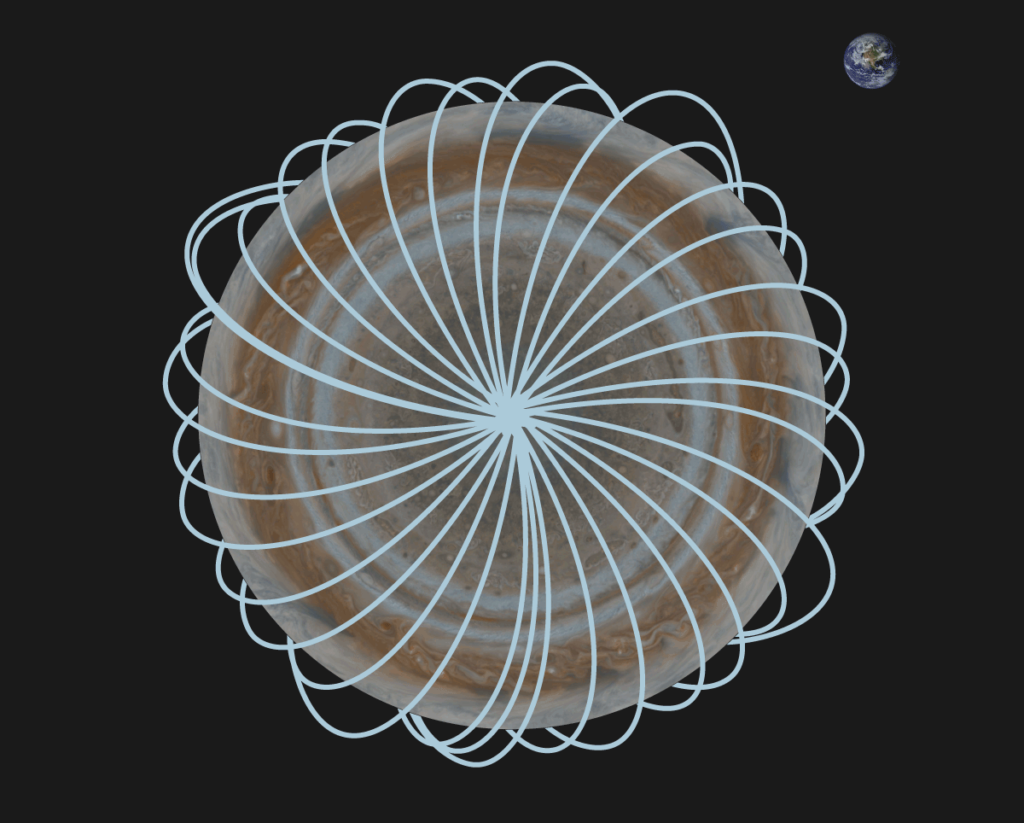The Juno spacecraft successfully entered orbit around Jupiter on July 4. The solar-powered craft will spend 20 months studying the planet’s composition and history, then burn up in Jupiter’s atmosphere.
A Five-Year Trip
Juno spent two years looping through the inner solar system, then slingshotted past Earth to gain speed for its long trip to Jupiter.
Jupiter Arrival
Juno accelerated toward Jupiter, pulled in by gravity. On July 4, Juno fired its main engine for 35 minutes to slow down and enter orbit around the planet.
Two-Week Orbits
After two long orbits of about two months each, Juno will settle into a series of tighter orbits, passing Jupiter every 14 days. Juno’s final orbit in early 2018 will graze Jupiter’s clouds, incinerating the spacecraft.
A Spinning Spacecraft
Juno is the most distant solar powered spacecraft. Its spinning hexagonal body supports three large solar panels to capture the dim light of the outer solar system. Instruments are fixed between the solar panels for a wide field of view.

Pole to Pole
Juno will pass close to Jupiter’s surface to avoid the punishing bands of radiation surrounding the planet. The orbits are timed to gradually scan the planet from pole to pole in evenly spaced bands, seen here looking down on Jupiter’s north pole.

Piercing a Titan’s Veil
A short video on the Juno mission, from launch to final orbit: http://nyti.ms/290nJJY
Article By: Jonathan Corum
Source: http://www.nytimes.com/interactive/2016/06/28/science/space/nasa-juno-mission-to-jupiter.html?_r=1




